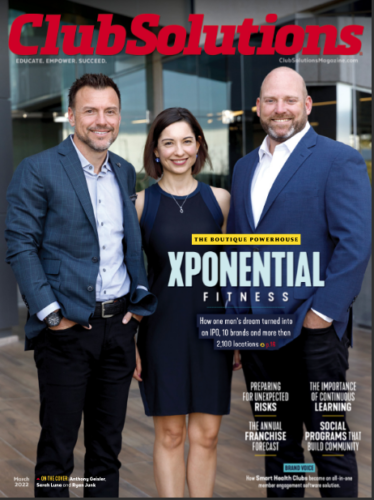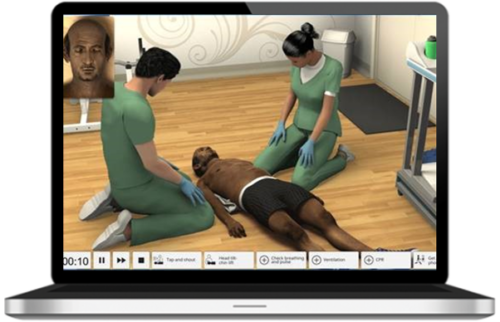
CrossFit Vs. Gold’s Gym
A few years ago, I bumped into an old friend at a conference. This guy looked totally buff. I asked him what he was doing for exercise. That is when I first learned about CrossFit. And while I have never done CrossFit myself (I have a home gym and use it religiously, by the way!), I found myself immediately intrigued by the idea. At its foundation, CrossFit is based on the idea of evolutionary mismatch (See Geher, 2014). Evolutionary mismatch exists when something in an organism’s modern environment mismatches the conditions that surrounded the environmental conditions that existed during the evolution of that organism. In short, CrossFit seeks to provide exercise experiences that map onto the kinds of physical activities that our nomadic ancestors would have experienced regularly. If you know me well, you can probably guess that I like this idea.
I saw my friend a year later at that same conference. Still looking buff, but this time, his arm was in a sling. “CrossFIt?” were the first words I said to him. “… CrossFit …” he replied. Apparently, CrossFit has a relatively high incidence of injury. I guess it’s not all peaches and cream.
A few years later, a fresh new graduate student walked into my office. Bright and motivated, Jessica Fell described herself as big into CrossFit. For her thesis, she wanted to explore the differential outcomes associated with CrossFit versus a more traditional kind of gym experience. “Sure, that sounds great!” I said.
CrossFit versus Gold’s Gym
We decided that we could not conduct a true experiment on this question for practical reasons. A true experiment would have included randomly assigning participants to either attend Gold’s or to attend CrossFit for an extended period of time. Even if we had enough money to do that, it’s hard enough to get people to go to the gym as it is—imagine the logistics involved! So we used what is called a matched-groups design which is a quasi-experimental research design. In short, we found a bunch of people who were attending CrossFit and a bunch of people who were attending Gold’s, both at various gyms around the US, and asked them to participate. And we made sure that the two groups were matched statistically in terms of such variables as gender composition, socioeconomic status, and even basic personality traits (such as extraversion and emotional stability).
As our data showed (see our official academic article on this, Fell & Geher, 2018, published in the Journal of Evolution and Health), the exercise experiences of these two gyms differed pretty dramatically. People who attended Gold’s were much more likely to use the stationary bicycle, stairmaster, and treadmill, for instance, while CrossFitters were more likely to use kettleballs and to engage in intensive interval training (designed as proxies for the kinds of physical activities that would be common under pre-Westernized nomadic conditions).
Do CrossFit and Gold’s Lead to Different Outcomes?
We collected data from nearly 200 gym goers across the country. The survey was intense, taking participants nearly an hour to complete. We asked questions about how frequently they attended the gym and how long they had attended for. We also gave them measures related to exercise motivation, including the Exercise Regulations Questionnaire, the Exercise Motivation Inventory, and the Exercise Feelings Questionnaire, all designed to see if members of the groups differed from one another in terms of these important psychological outcomes.
article continues after advertisement
At the end of our analyses, we found two substantial and significant differences between the groups. CrossFitters scored higher than Gold’s Gym members in their competitive drive as well as in their motivation to connect with others in the exercise process. In short, CrossFitters are more competitive and more social than are members of Gold’s Gym.
From a research methodological perspective, it is hard to say if these differences are the result of (a) the fact that these different gym experiences shaped these different psychological attributes or (b) whether these psychological attributes shaped the kinds of gym experiences that participants chose. Future research would be needed to hone in on that particular question by using a different methodological design.
In any case, we were kind of surprised to see that there were no significant differences across the groups in such behavioral outcomes as (a) how frequently they attend the gym or (b) how continuously they attend (i.e., how long they have been members). In short, across most variables, we found differences on most variables between CrossFitters and Gold’s Gym members to be negligible.
Bottom Line
In this day and age, humans have the option to do just about no exercise at all. Many of us complain if we have to lean over to get the remote control for the TV! Under ancestral conditions, there was no option. Everyone had to exercise a lot just to survive—it was simply a part of life.
These days, people pay billions of dollars a year to belong to gyms around the world. This fact is, without question, a response to evolutionary mismatch when it comes to physical activity. These days, we have to make ourselves exercise so that we can match the kinds of experiences that our bodies evolved to have! Further, now, we have gyms, such as CrossFit, that take things a step further, encouraging not just exercise, but, indeed, evolutionarily informed exercise that explicitly takes the physical conditions that surrounded human evolution into account.
Does CrossFit live up to its mission? Possibly. But, as I see it, our research didn’t support this point too strongly. The outcomes experienced by the CrossFitters in our study were, for the most part, no different from the outcomes experienced by the members of Gold’s Gym—with the exceptions of differences in competitiveness and the need to affiliate with others during exercise experiences. If you are highly social and/or highly competitive, in fact, CrossFit may well be the gym for you.
But perhaps the bottom-line lesson of this research is this: Which gym you choose to join might not matter as much as whether you get off the couch and get to the gym at all. Keep that in mind when you’re making your 2019 New Year’s resolutions!
References
Fell, J., & Geher, G. (2018) Psychological Outcomes Associated with CrossFit, Journal of Evolution and Health, 2(2), Article 7. https://doi.org/10.15310/2334-3591.1071
Geher, G. (2014). Evolutionary Psychology 101. New York: Springer.
Hardy, L., & Markland, D. (1993). The exercise motivations inventory: Preliminary development and validity of a measure of
individuals’ reasons for participation in regular physical exercise. Personality and Individual Differences, 15(3), 289-296.










































































